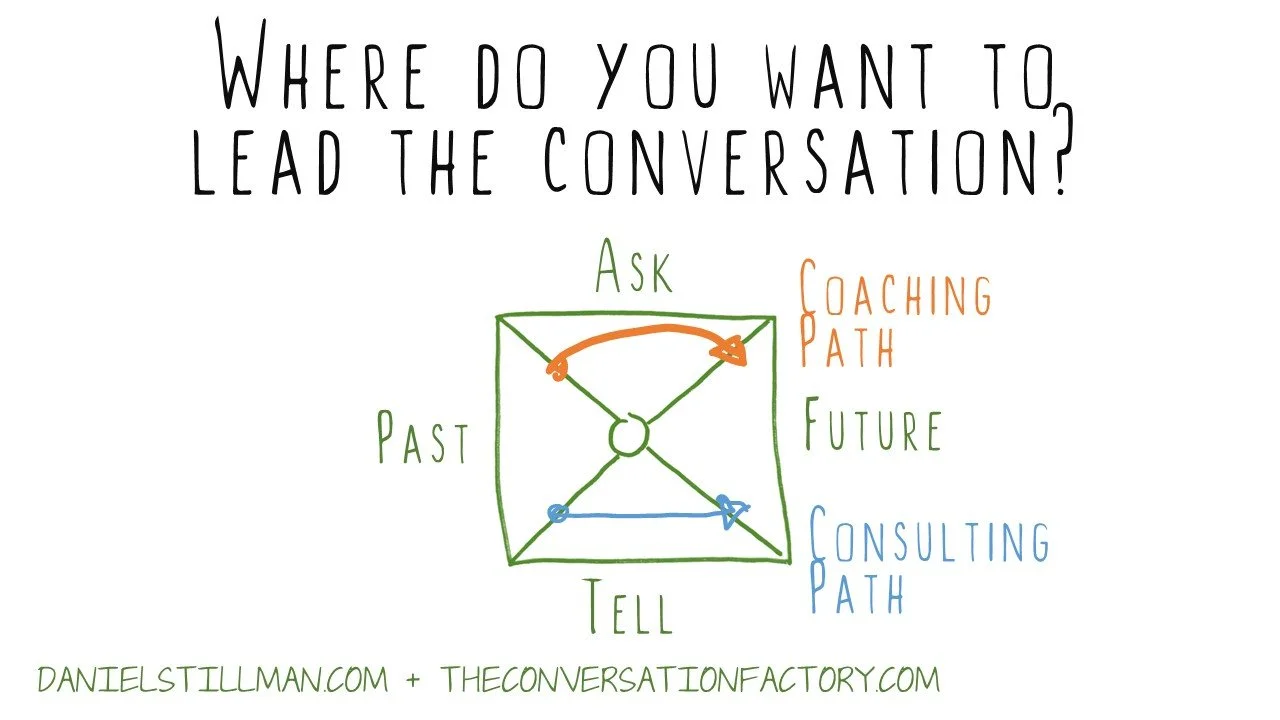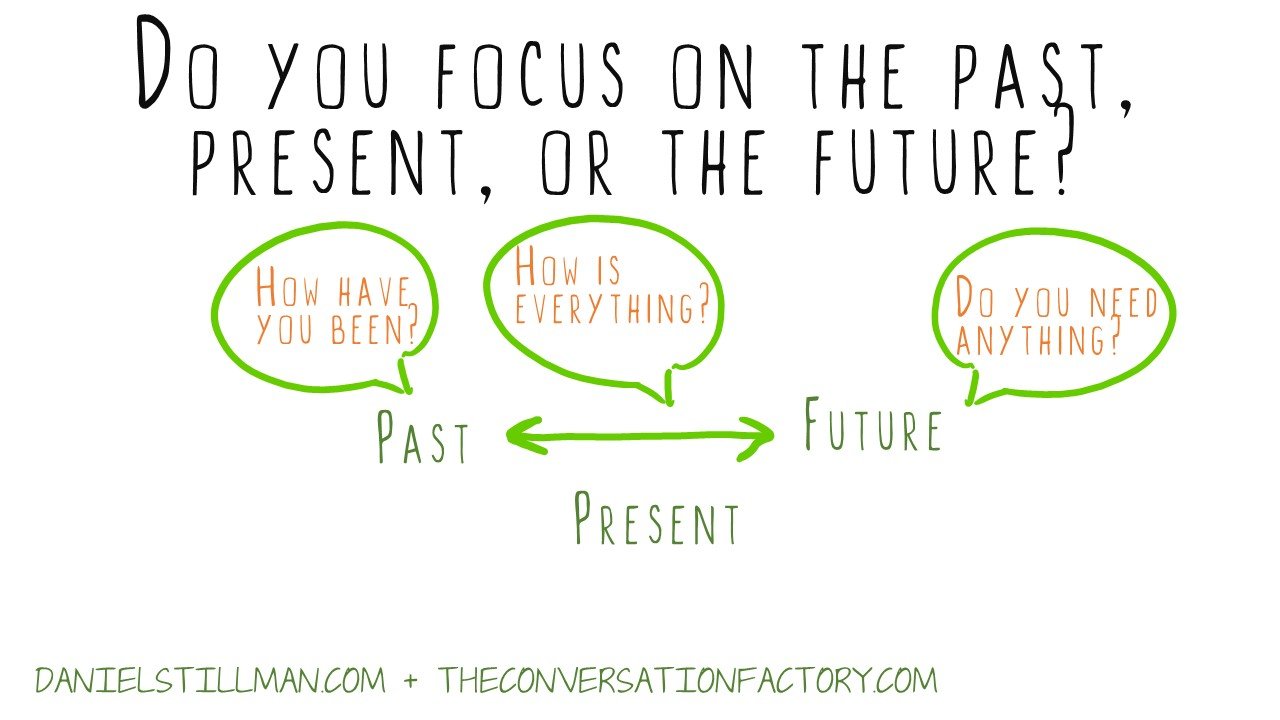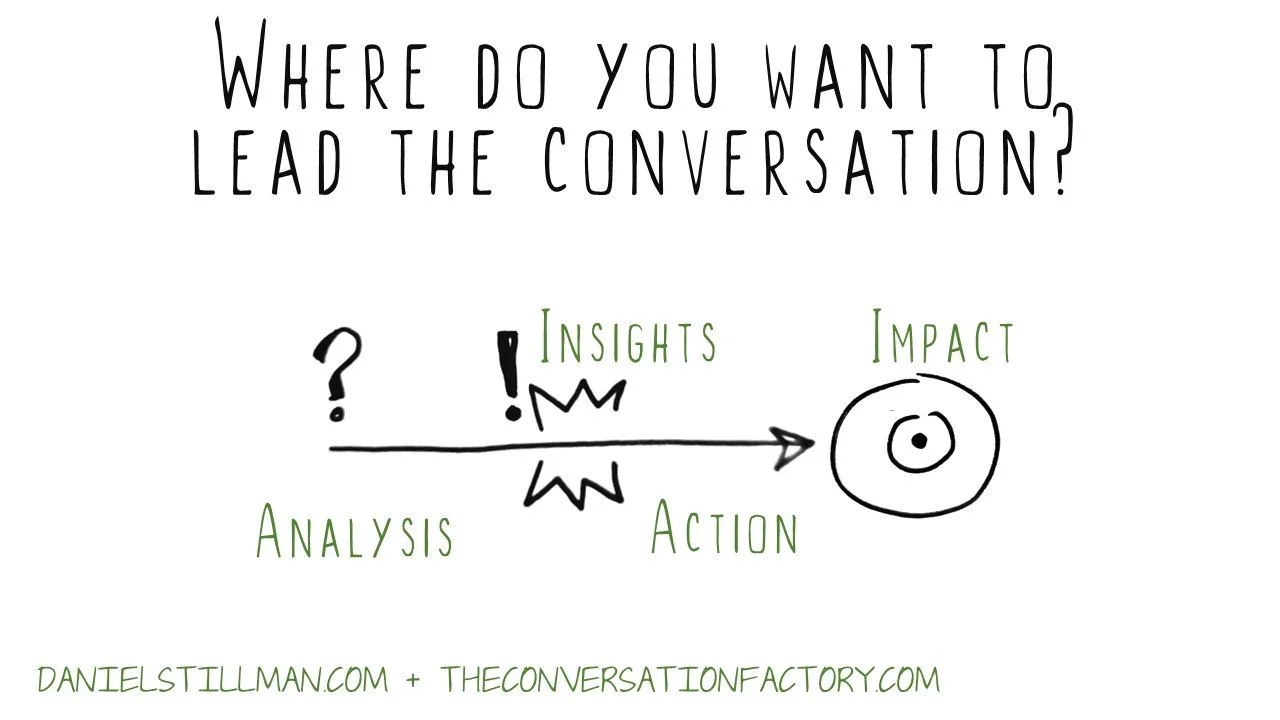Conversational Leadership Essentials: Do you Consult or Coach?
Questions evoke answers that are in their likeness. Broad questions usually get broad answers. Generous or thoughtful questions often evoke more generous and thoughtful answers.
Conversations are the fundamental unit of change in any context, and questions are what drive conversations. So if you want to lead powerful change, then you need to master powerful questions. And you may also need to revise your theory of change. It’s common to believe that people will change when told that there’s a better way. But the most powerful changes are self-motivated. Consulting can produce powerful change…but coaching can produce longer-lasting change.
Are you Asking or Telling?
When a waiter comes by your table and asks you and your companions mid-meal “Is Everything Good?” it’s not really a question.
It’s more of a statement, an assumption or presumption….and the generally polite response is a nod or a smile.
“How is everything?” is a question that doesn’t assume that everything is good, but it's SO broad. EVERYTHING? I can’t begin to form an answer. When someone asks me that question, I literally start to scan my entire life.
Similarly, when a leader sits down with a direct report, asking “How is everything?” can be an overbroad question that people can find hard to answer. Breaking “everything” into key components like work-life balance, workload overall, and personal development goals can make it much easier to answer.
A question like “everything good?” sits somewhere between a “pure ask” and a “pure tell” - A pure tell in this situation would be like a waiter coming by and telling you “You’re good. Here’s the check.”
Yikes.
Telling is clearly not the right conversational move in this context.
Questions can lead the conversation toward the past, present or future
“How has your service been?” seeks to understand the past.
“Do you need anything?” seeks to learn if you need anything in the immediate future.
Questions focus the attention of the people hearing it. With our questions, we can draw people’s attention to the past or toward the future. We can focus the conversation on the positives or on the shortcomings of a situation. Each way of forming a question is a way of directing the conversation. Choosing a direction for the conversation is leadership.
One way to see the Past-Present-Future spectrum in action is in project management.
A retrospective asks “How did we do?” at the end of a project, the equivalent of asking a person “How have you been?”
“How are we doing?” is a question that seeks to understand the current situation.
“How will we succeed?” is a question we can ask at the start of a project about the future.
“How did we succeed?” is a question we can ask in the present from the future.
Asking from the future is sometimes called “Backcasting.”
Where do you want to lead the conversation?
Anyone, at any moment, can lead a conversation, just by speaking up. What you say, how you ask, and what you notice, will draw people’s attention to one aspect of the conversation or another.
Where do you want to lead the conversation? What is your compass as you navigate complex challenges?
One fundamental conversational leadership framework I like to use with my coaching clients combines the ASK-TELL spectrum with the PAST-FUTURE spectrum.
I hold these spectrums in mind, together, as I am leading a coaching conversation. And I often draw these spectrums as a 2x2 matrix, below, for my clients when I’m coaching them around *their* coaching skills. Let’s call this the Conversational Leadership Matrix 2.0, since an earlier version can be found in my book, Good Talk.
When to Coach? When to Consult?
When a building is on fire, there’s no time to spare.
If you know where the exits are, just tell people “the building is on fire. The exits are down the hall.”
If you know what a person’s problem is and you can solve it, go ahead and tell them:
“These are the problems you’ve been having. This is the solution that will fix it.”
That’s the “consulting path” in blue, in the diagram below. A Consulting conversation can be a very powerful one.
The “coaching path”, in orange, is different. It creates space and time for someone to decide for themselves what their real challenge is, what they really want to create, and how they will proceed.
Most of the time, challenges that feel like a raging fire are not actual emergencies. It can be worthwhile to slow down and let the person find their own solution.
Framing Powerful Questions IS Leadership
Telling and directing can often feel easier than finding a really powerful question to ask. But telling/directing people has several major downsides:
For complex challenges, that aren’t fires (ie, emergencies), simple solutions rarely exist. Complicated challenges can be solved with your past expertise. For complex challenges, your hunch is just a hunch. If you’re new to the complex/complicated distinction, check out the Cynefin framework.
Telling places the burden of knowledge, of knowing the "right" solution, on the shoulders of a single person (the leader) in situations that require more nuance or a diverse knowledge set
Telling disempowers the people being told/led because it discourages them from finding their own solution.
The solutions we find for ourselves are the ones we’re most likely to stick with (The IKEA effect is powerful!)
The most Creative and Innovative solutions are most often found by the people who are closest to the challenge. Respecting the knowledge of the person with the challenge means respecting the person. Telling can feel like disrespecting the person.
Over time, telling creates a person or team that counts on being told and not listening to their own creativity. It's often triggering for people who have spent time with leaders who rely on telling/directing without justification, so, why bother being creative?!
For these reasons (at least!), coaching, with permission, is one of the most powerful ways to lead and to create change that sticks. Don’t forget the story about the company that replaced all their managers with coaches and achieved 20% more productivity and engagement!
Coaching is a modality that leans into asking over telling, and plays artfully with the past-future spectrum.
Telling people things is a tempting path. It’s a more old-school form of “heroic” leadership. It can offer a sort of short-term high, a dopamine response. Coaching is a slower form of conversational leadership, and the satisfaction from these conversations takes a bit more time.
Hacking Coaching Conversations with the SOON Model
If you want to add coaching to your leadership utility belt, one of my favorite simple models of coaching is the SOON model. It can be a helpful compass for you to find your way in a complex coaching conversation and optimize the flow of the conversation for maximum impact. Let’s break the model down, and as you read along, lets map these key coaching questions to the Conversational Leadership Matrix above.
If you crave a practical roadmap of coaching and want to build your coaching habit as a leader, I highly recommend "The Coaching Habit" from Michael Bungay Stanier! A deeper dive into *why* coaching can be such a powerful conversational “technology” can be found in Timothy Gallwey's "Inner Game of Tennis." If you want to learn from *my* coach, check out my conversation with Robert Ellis, the author of “Coaching from Essence” here.
The SOON model traditionally starts with “success” but I’ve found that people start with where they are - the Situation, and the best coaches let the coachee unwind what the current state is, and how they got there. So I’ve added an extra S!
SSOON stands for Situation, Success, Obstacles, Options and Next Steps.
1. Situation
The Situation is what people come to the coaching conversation with. It’s the answer to the question “What’s going on?” or “How can I help?” These kind of questions are directed to the present, from the present. The coachee might tell you about the past or the challenge, or how things came to be the way they are. It’s your job to probe, inquire and hold space for the full story.
Given that there’s a huge gap between how fast we can talk and how fast we can think (4000 wpm vs 125 wpm) there’s no way that someone can possibly tell you all they could about what they are thinking about a certain issue or challenge. So, it’s worth slowing down and making sure you really understand the situation. Learn more about the thinking/talking gap here.
A transformational coaching stance is to draw the coachee’s attention towards the future, from the past or present challenges.
2. Success
What is Success? This is a question about the future, from the present. The clearer we can help the coachee to think and talk about “what does good look like?” the more helpful we can be as the conversation continues. What is the Ideal Future we’re trying to create?
Asking from the present, to the future, to clarify success and “keep our eye on the prize”, is powerful. But a transformational coaching stance can amp up a vision of success in two ways. One approach is to ask “What’s better than you can imagine?” (a favorite question of *my* coach Robert Ellis). Another conversational tool is to stand in that Ideal Future and ask questions as if that future was now. Sometimes this is called “the Magic Wand” question. “You have the goal we’re defining as Success…now what?” That can help us understand what REAL success looks like. Slow the conversation down. Leverage the Listening Triangle to really expand and clarify that Ideal Future.
3. Obstacles
What are the Obstacles? The Success questions look to amplify the positive aspects of what we’re trying to accomplish. But we need to be open and honest with ourselves about what’s in the way after we’ve clearly defined where we really want to go. List all of the obstacles!
The simplest way is a question that points towards the past “Why don’t you have it (the success state outlined earlier)?”
4. Options
Once we’re clear on the goal and what’s in the way, we need to get clear on the Options ahead of us - the near future. Some say that “the obstacle is the way”. Others say that the best way to eat an elephant is one bite at a time…and that starting with the tusks is the hardest way ahead!
Laying out all the options that can create forward movement toward success is a brainstorming exercise that the coachee needs time and space to think through. What are all the ways they can answer the question “What could you do?”
Once they’ve hit a wall, it’s possible to move into “tell” territory, gently, with questions like “Have you considered something like…?” if you have relevant information, knowledge or experience.
Telling in small doses can be impactful once we’ve asked deeper questions. This is when I find that offering a framework can be extremely helpful - not to give a solution to the coachee, but to help them see their choices in relationship to each other. Mapping options to some timeless frameworks like the Systems Thinking Iceberg, the Ladder of Intervention or my other all-time favorite ladder, the Abstraction Ladder, can help summarize and concretize the work so far, and set you and the coachee up for…
5. Next Steps
At this point, we might be getting close to the time when the conversation needs to end. Once the Zoom room closes, what will happen? What can the coachee commit to doing? If you’ve slowed down the conversation in the Options phase, there will be plenty on the table that they can do…but asking “What will you do?” is a question that points towards commitment.
One framework that my coach Robert loves to use is the idea of the Domino Effect. It’s a wonderful fact of physics that a domino can knock over another domino that’s 1.5X larger. It only takes 29 dominos, each just a bit larger than the next, to knock over an Empire State Building-sized domino.
Picking just one thing that is small enough to be easy to commit to and big enough to be edgy can be powerful. Think of this as the “biggest smallest thing.”
Ask the coachee to find that domino that will set them up for the success they defined earlier - a question that points towards the future.
Shifting the Analysis-Action Set point
Everyone has their own habitual, or learned set point between Analysis and Action.
Some people love to jump straight into action…while others would rather stay in Analysis mode forever…or at least until they feel 1000% sure of their path ahead. Amazon Executive Chairman and Founder Jeff Bezos has been famously quoted from a 2016 annual shareholder letter about this challenge. He suggested that while it's always nice to have access to all of the information you'd want before making a choice and moving into action, in the vast majority of cases, waiting until you know everything you should know is impossible…and detrimental.
"Most decisions should probably be made with somewhere around 70 percent of the information you wish you had," Bezos wrote in the letter. "If you wait for 90 percent, in most cases, you're probably being slow."
A SSOON coaching conversation moves a person between Analysis, Insights and Action within a fixed time period, all while keeping our minds fixed on Impact - the reason we want to take action. A SSOON conversation is a balanced conversation - one that puts equal emphasis on Analysis, Insights and Action.
Even outside of an official coaching conversation, we can choose to use the tools of coaching to co-create our approach to problem-solving, and to make sure we’re not putting too much emphasis on one mode of thinking vs another. In the context of group conversations, the coaching mindset looks a lot like facilitation. To learn more about leading groups intentionally, check out this essay on three essential conversations for group transformation and this essay on the nine elements of transformational facilitation.






